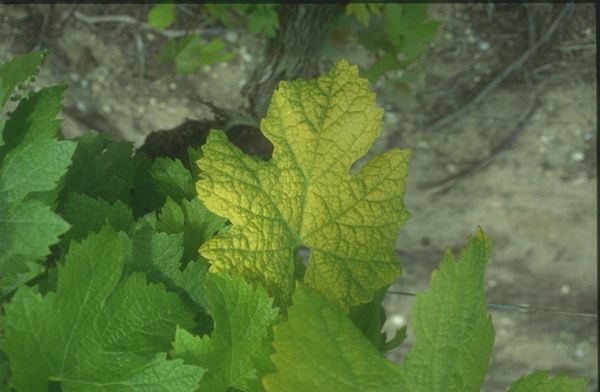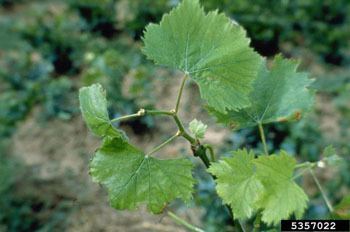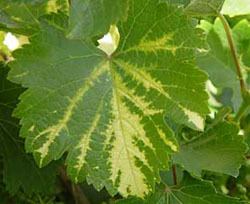Group Group IV ((+)ssRNA) Higher classification Nepovirus | Subfamily Comovirinae Scientific name Grapevine fanleaf virus Rank Species | |
 | ||
Similar Nepovirus, Xiphinema index, Grapevine leafroll‑associated virus, Arabis mosaic virus, Xiphinema | ||
Grapevine fanleaf virus color split pdb 2y7t 2y7t 2y7v
Grapevine fanleaf virus (GFLV) is a plant pathogenic virus of the family Secoviridae. It infects grapevines, causing chlorosis of the leaves and lowering the fruit quality. Because of its effect on grape yield, GFLV is a pathogen of commercial importance. It is transmitted via a nematode vector, Xiphinema index. This nematode acquires the virus through feeding on roots of an infected plant, and passes it on in the same manner.
Contents
- Grapevine fanleaf virus color split pdb 2y7t 2y7t 2y7v
- Grapevine fanleaf virus split pdb 2y7t 2y7t 2y7v
- References

The virus has an RNA genome contained on two RNA molecules, each of which is covalently attached to a small protein (the viral genome-linked protein, VPg) at the 5' end. Each RNA encodes a single open reading frame, coding for a polyprotein. The longer polyprotein (the product of RNA1) is cleaved into five functional proteins, including the viral RNA polymerase and the shorter (from RNA2) is cleaved into three proteins. The coat protein derives from RNA2 and forms the icosahedral capsid of 60 identical protein subunits.

Grapevine fanleaf virus split pdb 2y7t 2y7t 2y7v


